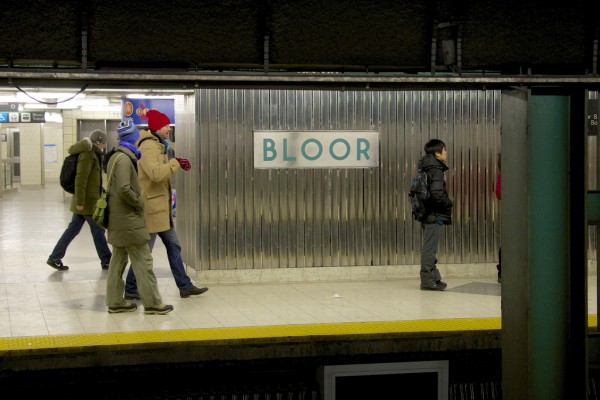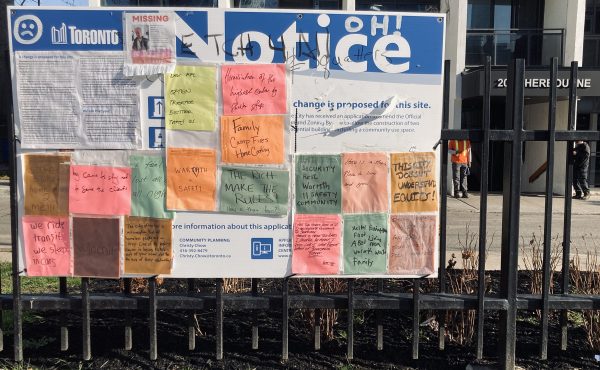Growing up I was friends with a kid named Stacey. Although popular, I envied what I perceived to be her level of sophistication. She was a head taller than me, knew the actual meanings of cuss words, and wore pink lip gloss. While confined to my tiny apartment doing homework in the public housing community where we both lived, Stacy was permitted to take the bus.
Alone.
That was at least twice as cool as my speech arts championship title.
She ventured on public transit to independently purchase groceries for the family, take her younger siblings to see their respective dads, and visit the salon to have her hair braided. Often, she regaled us kids with public transit tales. Seeing an actual deer at the end of the line after missing her stop. Being threatened with a spanking by a senior for dirtying the seat with her shoes. Narrowly escaping a jerk who sat beside her and ran his fingers across her tiny breasts.
She was nine years old.
Last week, when John Tory announced a TTC fare exemption for children twelve years of age and under, I thought of Stacey. And not because I oppose this progressive initiative. Numerous urban placemaking reports find that children who take public transit have better health outcomes, feel an increased sense of confidence, and develop the required skills to successfully navigate urban spaces. Equally important, eliminating the children’s fare will significantly alleviate financial pressures on low-income families.
However, before breaking out the champagne – or perhaps in this instance a box of apple juice – let’s think through a couple of critically important next steps.
Fundamentally, this initiative is underpinned by accessibility principles. Most people conceptualize accessibility as the removal of a physical, technological, or in this instance, financial barrier. And they are partially correct. However, when access for groups formerly underrepresented in public spaces are developed, provisions for educational strategies to address safety, capacity building, and attitudinal barriers, must also be made. These critically important aspects of urban accessibility initiatives are often overlooked.
As I think back to Stacey’s epic urban travels, one thing that occurs to me was that she was not taught public transportation safety and etiquette. This sometimes caused her to disrupt the quality of experience for other passengers, and more importantly, placed her in unsafe situations. Given that we can anticipate more children on the bus than ever before, some of whom will be travelling alone like Stacey, it is imperative that the TTC, with the support of the City of Toronto, develop age appropriate public transit education materials. Creative, situation-based lessons should be developed keeping in mind Ministry of Education curriculum guidelines. Specifically, under its Healthy Living strand, there is an expectation for teaching children how to safely navigate places outside of the classroom.
Speaking of which, the learning should extend beyond schools. Using an organizational change framework, the TTC should engage their employees in a professional development process. Arguably, a large number of TTC employees are already skilled with managing intergenerational dynamics on vehicles and property. A professional development process would build on current insights while exploring the emergence of new issues. For example, younger riders may require more assistance, engage in dangerous horseplay, or enact playground politics and bullying on TTC vehicles. Also, drivers travelling through inner-suburban high-density school cluster areas like Sentinel Road running between Finch and Sheppard, may experience a marked spike in passenger pick up during rush hours leading to delays.
In addition to student education and professional development, we must also engage adult passengers who comprise the largest stakeholder group in this transition. Within hours after the announcement, social media channels revealed the displeasure of a number of cranky grown-ups. Although some of the comments are borderline comical and don’t reflect the views of the majority, we can’t discount the ways that ugly “isms” — including ageism play out on public transit. Already, racial slurs are flung across the aisles over an accidental shoulder brush, some riders still refuse to politely give up their seats to the elderly, and female passengers have complained of sexual harassment. These existing issues will be further complicated by throwing little people who lack a certain degree of agency into the mix. The onus is on us adults to be mindful of modeling positive conduct, refraining from ageist behaviours, and watching out for young people in potentially unsafe situations.
I’m not suggesting that this free fare for kids requires a disaster preparedness plan. Kids have been riding public transit for decades. And the idea of free admission for children is not new. Similar programs have been implemented in Montreal, St. John’s, Newfoundland, and also in Salmon Arm, an oddly named town in British Columbia. It isn’t about whether or not creating greater access for children on transit is a great thing. It’s about proactively implementing a public education plan that ensures positive outcomes for everyone.
Especially kids like Stacey.
photo by Jamie McCaffrey





5 comments
I don’t see the issue. My daughter used the TTC alone to come home from school at eight and both ways when she was nine. Her only instructions were to sit near the front of the bus and be polite to the driver. Never a problem, though it was a short route (65) and she usually had the same drivers.
You certainly have high expectations of TTC drivers who already won’t say/do anything about high school students who NEVER remove their backpacks and plug the bus aisle from end to end. Nor do they do anything about students, children and others who occupy blue seats while seniors and others stand. So, why do you think suddenly hey and the TTC will will be able/willing to “educate” children on proper behaviour? How will you get rid of them if they are allowed to ride free? I don’t mean just troublemakers, I mean kids who ride, and ride just for the fun of it taking up already scarce capacity. More seriously, how will parents or police find kids who just don’t want to go home?
This cannot be terribly hard for the TTC to resolve. Simply:
1. Put safety & courtesy materials on the TTC website, maybe have a safety app/game contest.
2. Develop lesson plans for schools and daycares to use in kindergarten and Garden 1, 3, 5 & 7.
3. Bring back Barney Beaver, the TTC’s safety mascot.
4. Convert one retired bus for use as a TTC safety & courtesy bus that will be driven around to schools so kids can experience and practice safe behaviour on the bus.
5. Get a private company or a few companies to sponsor the initiative.
My Jr kindergarten class tool a walking trip to the fire station in 1983 to see a working fire truck. In Grade 3 we learned about our neighbourhoods (and grade 3 kids still learn the same thing today). There is definitely room to learn about safety and courtesy and being a helpful community member all at once.
Cheers, Moaz
PS. I started using the bus without an adult at age 8. My sister was 7 and we had similar safety rules which we almost always obeyed (except for that one time the back of the bus was empty so we tried to swing from the high grab bars).
Just last week I rode the Yonge Street subway with a young girl, under 10, certainly, who was riding the subway by herself. Although she seemed confident and very self possessed, I felt scared on her behalf! However, I realize that this is the reality for many working families, and acknowledge that I have an “old fashioned” sense when it comes to risks and responsibilities for young people.
As for TTC staff assisting younger riders, I think that current riders will also have to take on the village approach if they see a youngster riding on their own. I’d really, really like to think that not only safety but good behaviour and commuter etiquette is something that we’d all take a hand in. This could actually have a positive long term impact on building a sense of community – here’s hoping, anyway.
An additional story:
My son (wwho is 3 1/2) loves to sit at the back of the bus, and I usually join him while my wife sits at the front with the stroller and our 6 month old.
One day we were going on the bus with my niece who is 11 (but admittedly looks younger because of some old health issues) so I let her take my older son to the back of the bus while I sat in front with my wife and baby. We’re talking to each other but I can hear my older son chattering in the back. This is one of those 18m/60ft articulated buses.
About 20 minutes into the bus ride a young lady walks up to me and says, “excuse me, are those your kids in the back?”
My immediate response (which had me laughing later) was, “yes…I hope they’re not misbehaving” to which the lady smiled and said, “oh no….I just wanted to check.”
My response to that was a simple, “thank you” and I turned back to talk to my wife and we continued our conversation.